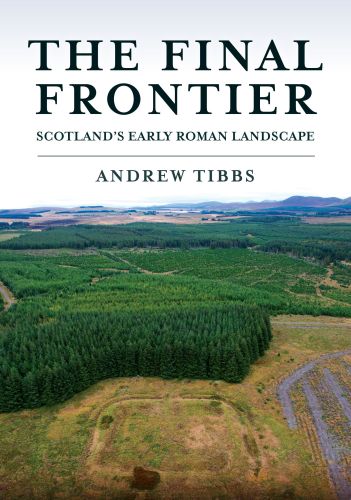
The Final Frontier, by Andrew Tibbs, is a gazetteer of Roman military sites dating to the 1st century CE, primarily concentrating on the Agricolan invasion of 86 CE, although some earlier sites are noted. The first few chapters of the book offer a brief summary of the Roman army in Scotland, together with a summary of fortification types, while the majority of the book is a catalogue of sites.
The catalogue is comprehensively researched and well referenced, with a bibliography for each site. Illustrations comprise a combination of photographs (mostly aerial) and colourised LiDAR data, often with useful annotations such as sight lines from fortifications and the locations of other relevant archaeological features. As such, the book is a useful compendium for anyone interested early Roman military activity.
The book is let down a little by the publication format. The size of the book (medium octavo) means that many of the images (particularly LiDAR data) are reproduced at a size too small to see detail. This is particularly acute when figures are embedded in the text rather given a whole page. The size of the images means that many of the features mentioned in the text are not marked on the figures (although conversely there are features on some of the figures not mentioned in the text). The desire to keep the volume to a limited page count mean that a number of the sites illustrated on the map of 1st century Roman military sites in Scotland do not have entries in the gazetteer (most notably the Gask Ridge towers, which are otherwise mentioned a number of times in the text). Presumably these measures were implemented to keep the cost of the book down, but unfortunately the usability of the volume as a whole suffers as a result. It should also be noted that there are numerous typographical errors in the text.
The book has a clear aim, which it lives up to – to provide a catalogue of 1st century Roman military sites in Scotland. The book summary on the back cover promises much more, particularly the analysis of Roman engineering, military sites in the landscape and how these impacted on interaction between Romans and indigenous people. Sadly these analyses are absent from the final volume, with only very brief summaries provided as contextual information at the start. This is a shame as the book is clearly heavily researched, well written and easy to read. In its current form it is best seen as a resource pointing to more in depth material, rather than a primary source in its own right.
